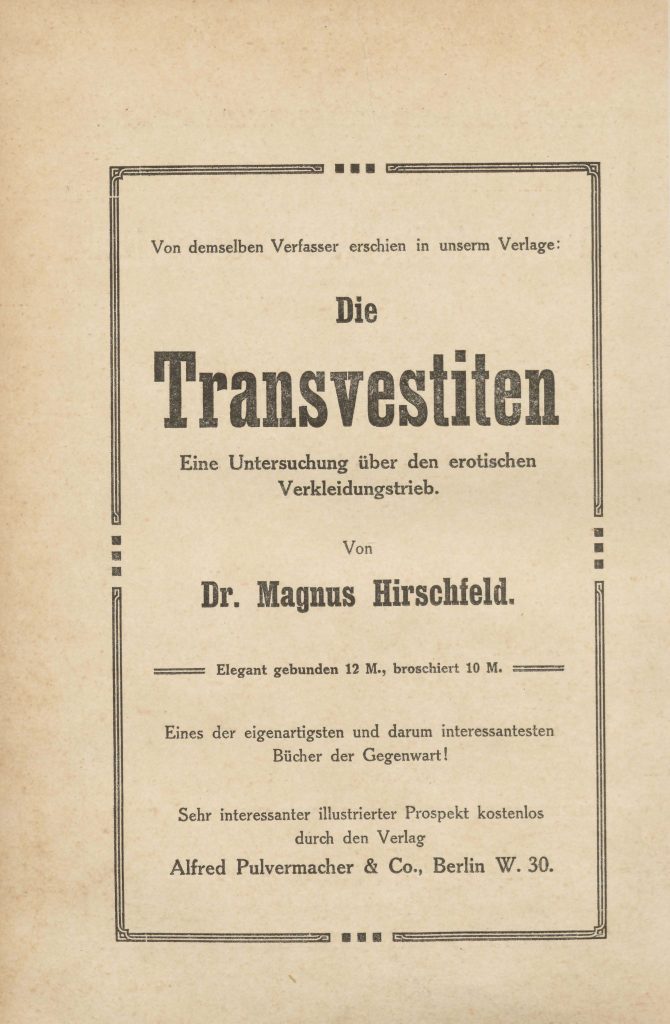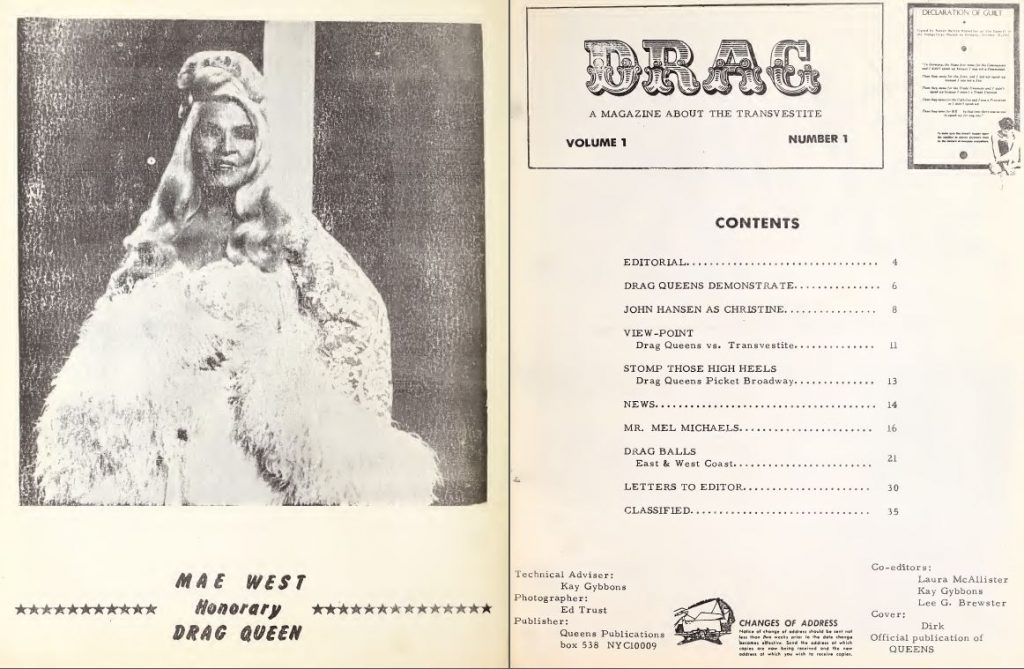When College of the Holy Cross professor K.J. Rawson first imagined what would become the Digital Transgender Archive (DTA), he had in mind something fairly simple: a collection of finding aids that would solve a problem he’d faced himself as a researcher—the difficulty of figuring out “where transgender-related materials are held.” The collection Rawson envisioned would guide researchers through the contents of scattered transgender history archives. What emerged instead is a multi-institution collaboration; a centralized digital repository of unprecedented scale that has made accessible digitized materials related to transgender history gathered from collections across the world.
The DTA, which continues to grow, currently contains some 1,400 items, ranging in genre from community newsletters and conference programs to periodicals like Drag and Cross Talk. There are even collections of personal photographs, like the collection of Phyllis Frye, the nation’s first transgender judge, which depicts her life’s journey from an Eagle Scout to a trans-rights activist.
Materials on the DTA are organized into collections; some hosted and digitized by the Holy Cross DTA team and others by institutions like Harvard’s Schlesinger Library or the GLBT Historical Society. Building a coherent site from so many different collections posed particular challenges to Rawson and his team. As Rawson explained via e-mail, “One of the biggest challenges has been bringing the various metadata formats and schema into a single schema within our system.” No matter where it originates, the DTA applies its own metadata to each item, making it easy to navigate the entire site using terms that describe an item’s topic, genre, subject, and location of origin.

Phyllis Frye, the nation’s first openly transgender judge, in her judges robes. Digital Transgender Archive.
Determining what those terms would be, however, meant grappling with a linguistic challenge inherent to transgender history—as the DTA website puts it, the term “transgender” is “not only culturally specific, but it is also only a few decades old.” Gathering archival materials on the worldwide transgender experience from before the 1990s requires navigating a set of terms that have been deployed inconsistently and lack fixed definitions.
The DTA has found a partial solution by using “transgender” not as an identity, but as a “practice”—anything related to “trans-ing gender” may be included in the archive. They “err on the side of inclusion,” Rawson wrote, preferring to maintain a wide scope because “we would rather provide a great deal of materials for our visitors to search through rather than excluding materials based on our assumptions about what people might be looking for.” DTA research assistant Maeve Plummer, who is a senior at Holy Cross, explained that because nonbinary gender expression has been framed in myriad ways historically, treating transgender as a practice rather than an identity category is central to an inclusive representation of transgender history.

First and second editions of the seminal Die Transvestiten by Magnus Hirschfeld were recently acquired by the DTA. Digital Transgender Archive.
Despite its standard of inclusivity, the archive is a reflection of the imbalanced ways in which the histories of transgender communities have been preserved; Rawson pointed out that most of the people represented in the archive are white, the majority of the archive’s materials come from collections in the northeastern United States, and the most frequently tagged topics by a factor of several hundred are “crossdressing” and “crossdressers.” These trends have prompted the DTA to seek out partnerships with collections around the world, and to “make extra efforts to collect ’zines and oral histories and other genres and formats that help to correct some of the biases,” wrote Rawson, while still ensuring the privacy concerns that accompany more personal materials are respected. Plummer got involved in the DTA to diversify the archive’s holdings, and part of this effort has been assembling a list of “global terms,” which she explained as a collection of “genders that go beyond our Western gender binary.” Rawson is working to assemble an international editorial board to strengthen this vocabulary.
Michael DeSantis, who is a history major at Holy Cross and a research assistant for the DTA, explained in an e-mail that working with the DTA has influenced his academic experience. Undergraduate history coursework taught him that “many aspects of the historical process are inherently political acts that include certain narratives while excluding others.” Through the DTA he’s witnessed the results of that exclusion while also working to counteract it, to “shed light on a community (people who transcend the boundaries of the gender binary) as well as a narrative (transgender history) that have largely been excluded from our nation’s historical consciousness.”
This post first appeared on AHA Today.
Tags: AHA Today Archives Digital History Thematic LGBTQ History
Comment
Please read our commenting and letters policy before submitting.







